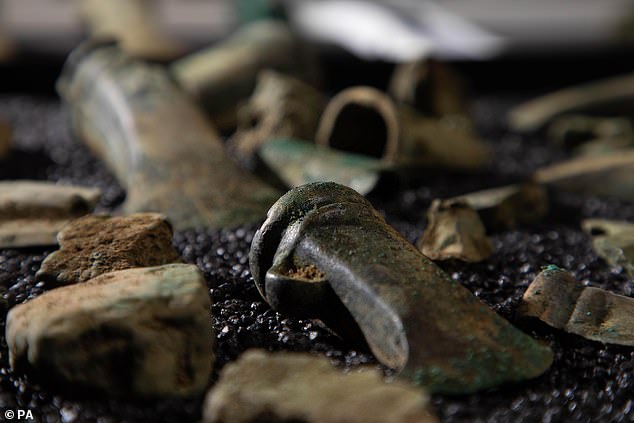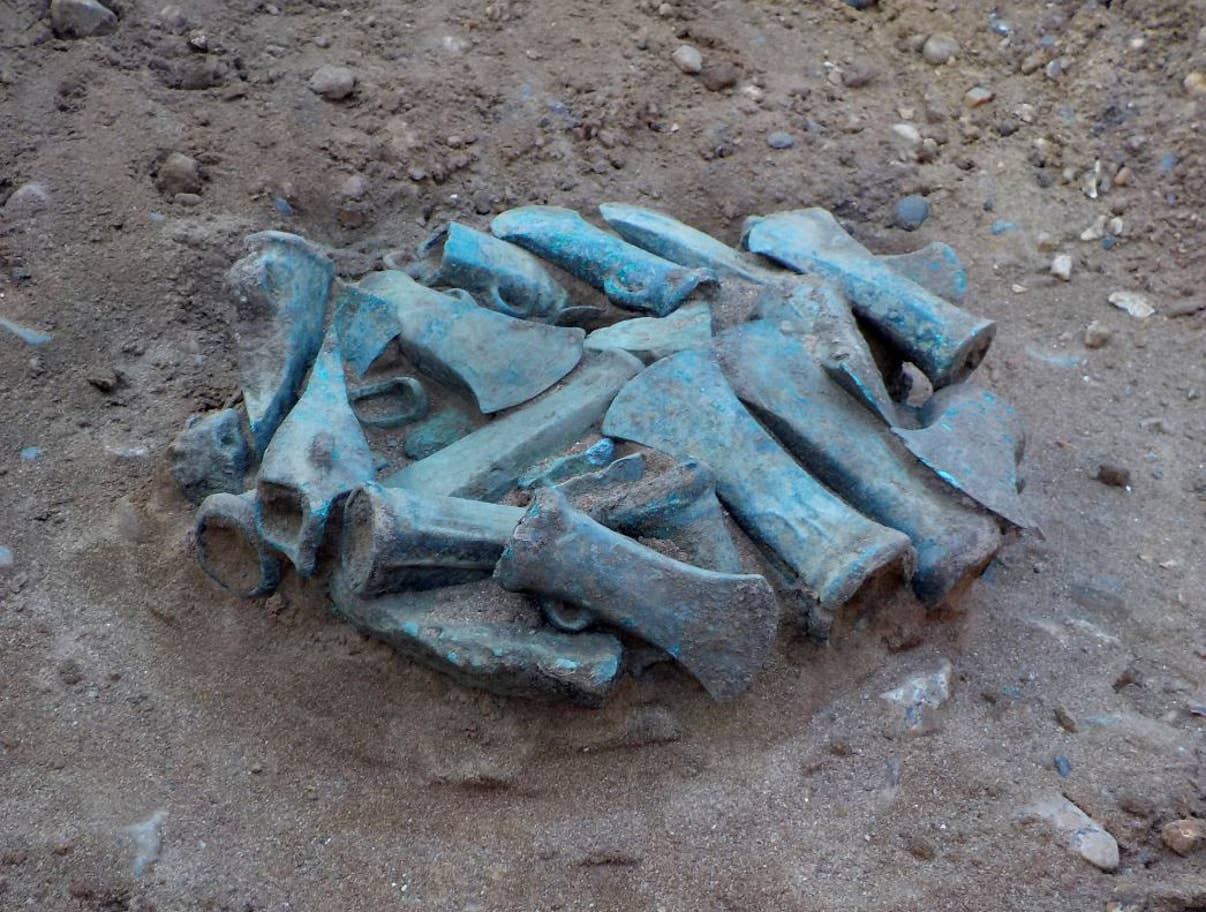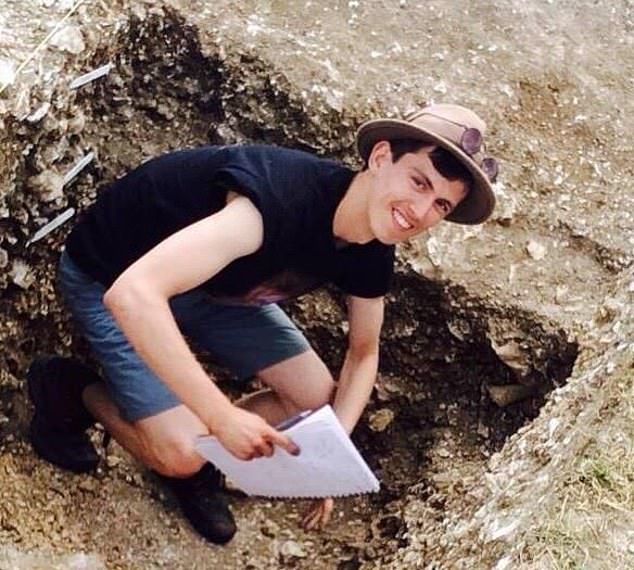Super nález, díky za článek. 
The first and immediately lifetime find of a budding archaeologist: hundreds of weapons and tools from the Bronze Age
Categories: Finds and rescue research abroad , Nálezy nejenom s detektorem ve Velké Británii a Irsku
A young archaeologist has discovered the largest Bronze Age assemblage to date in what is now London. Harry Platt's find from the autumn before last represents a total of 453 artefacts, dating from 800 to 900 BC and is the third largest of its kind ever discovered in the UK overall.
He couldn't have asked for a better start to his new job. In September 2018, as a twenty-one-year-old archaeology graduate student at the University of London, he was awarded a six-week temporary contract to carry out archaeological research in an area that had been on the radar of experts since the 1960s. He was only on his seventh day of work at the site, with a fine view of the Thames, when he noticed a greenish surface of clay at the very edge of the excavation, out of the interest of others...
At first he thought it was stone. When he gently removed the dirt, he discovered a bronze axe. "I was packing up for the weekend when I saw the green piece on the edge of my section. I thought it might be a rock or something, but then it started to look like an axe. I called everyone over right away and then we stared at it. And then more green spots started appearing around it. It was crazy," Harry explained.
There were several dozen axes in one big 'package'. And that wasn't all: "The items we found were in small groups, so that night we dug up the first group and thought that was it," Platts said. He continued, "But then my supervisor and I kept digging and drawing, and we had other people making photogrammetric models. Other people were recording GPS and cataloging the finds. By the time I finally got home, after five hours of overtime, it was just time to crack open a beer and celebrate."
The 453 items, weighing a combined total of over 45kg, included mainly bronze axes, swords, spears, knives, daggers, bracelets or ingots, as well as various wooden tool remains. The depot lay on the edge of a square structure that experts had already noticed on aerial photographs in the 1960s. All of the objects had been damaged or broken before they were deposited. It could thus be a collection of material to be recycled, suggesting a possible metalworkers' workshop. Equally, the assemblage could have been an offering to the gods, a common practice at the time. Museum curator of archaeology Kate Sumnall said, "The Havering site is particularly important because of its proximity to the marshes and the Thames, which made it easier for people to travel here to exchange materials and goods."
Harry Platts, who is now studying medieval archaeology at the University of York, believes the find has clearly signalled the direction of his future career. He believes a similar find may not happen again and for many archaeologists it is literally a dream come true, a once in a lifetime experience. The so-called "Havering Hoard" will be on display at the Museum of London next month.









museumoflondon.org.uk, dailymail.co.uk, thetimes.co.uk
The article is included in categories:




